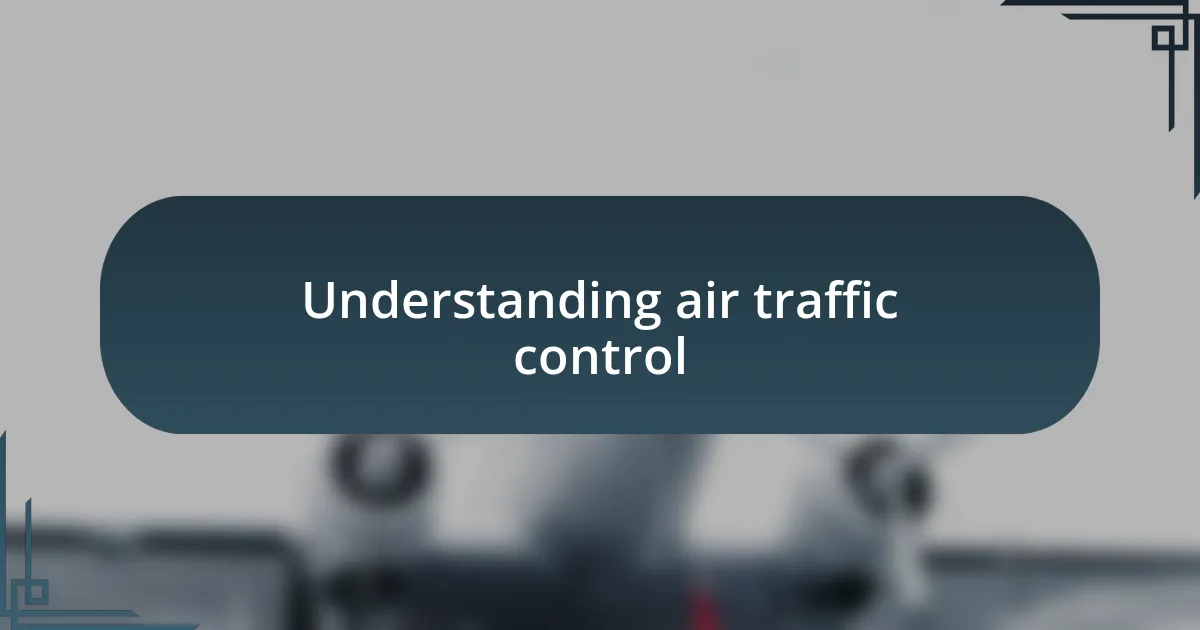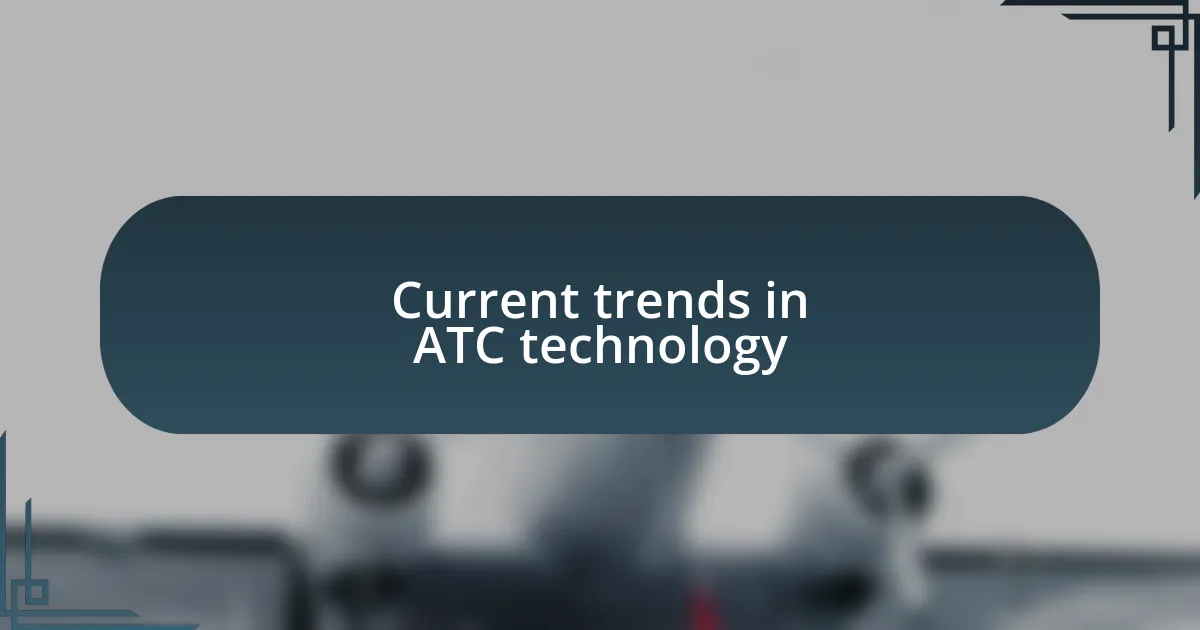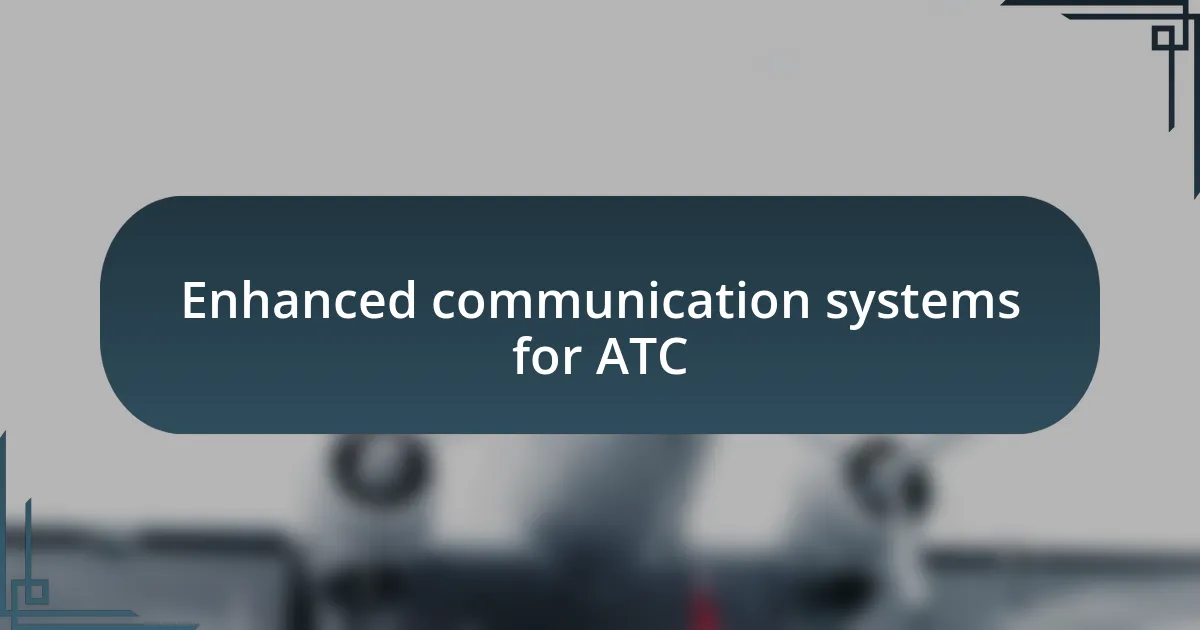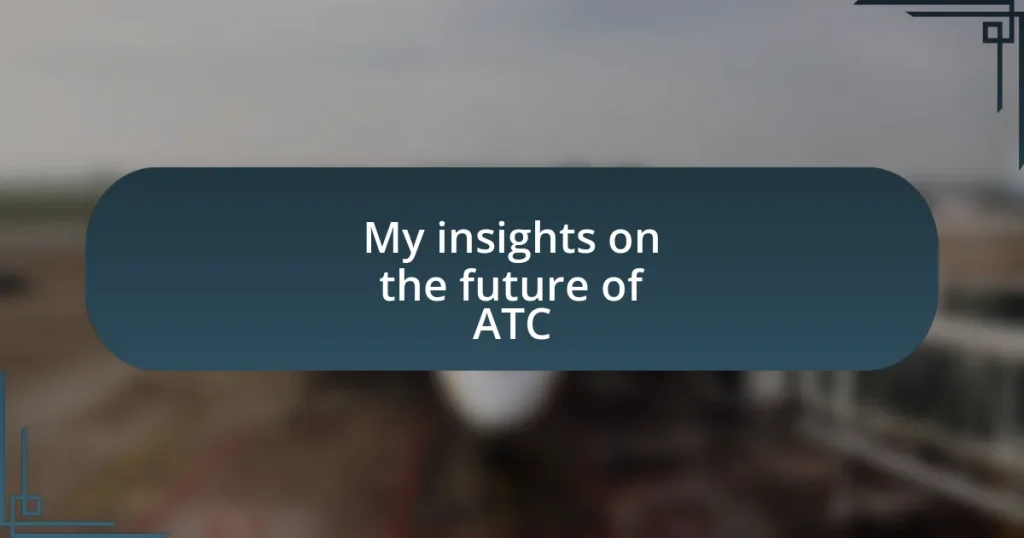Key takeaways:
- Air traffic control (ATC) is essential for ensuring flight safety and efficiency, with controllers managing numerous aircraft under high pressure.
- Current trends in ATC technology include increased use of artificial intelligence, remote tower operations, enhanced data sharing, VR training, and 5G integration.
- Improved communication systems, such as 5G and remote tower technology, significantly enhance situational awareness and optimize resource management in ATC.
- Effective data collaboration between airports and airlines is crucial for quick, informed decision-making, especially during emergencies like weather disruptions.

Understanding air traffic control
Air traffic control (ATC) might seem like a faceless bureaucracy, but it plays a crucial role in ensuring the safety and efficiency of our skies. I remember my first visit to an ATC facility; the atmosphere was electric. Controllers were glued to their screens, coordinating the movements of dozens of aircraft while maintaining calm under pressure. It made me realize just how vital their role is in our everyday lives.
One fascinating aspect of ATC is the sheer complexity of the communication involved. Have you ever stopped to consider how many flights are managed at a given moment? During peak travel times, controllers juggle multiple aircraft, all while adhering to precise protocols. This intricate dance of technology and human skill fascinated me and highlighted how pivotal effective communication is in this field.
Additionally, the emotional investment of air traffic controllers can’t be understated. They carry the weight of responsibility for hundreds of lives every day. It’s not just about directing planes; it’s about ensuring families reach their destinations safely, which adds an intense layer of pressure. Sometimes, I wonder if the average traveler truly appreciates the dedication and expertise that goes into every flight.

Current trends in ATC technology
Current trends in ATC technology reflect a dynamic shift toward automation and enhanced data integration. I recently came across a case where a facility implemented AI-driven systems to predict air traffic patterns and optimize resource allocation. It genuinely amazed me how these advancements not only improve efficiency but also alleviate some of the pressure on controllers during peak hours. The future looks promising as technology continues to evolve.
- Increasing use of artificial intelligence (AI) to assist with traffic management.
- Introduction of remote tower technology, allowing controllers to manage air traffic from afar.
- Enhanced data sharing between airports and airlines for real-time decision-making.
- Implementation of virtual reality (VR) training programs to enhance controller skills.
- Adoption of 5G technology for faster communication and data transmission.

Enhanced communication systems for ATC
The evolution of communication systems in air traffic control (ATC) is something that truly fascinates me. Imagine a world where 5G technology enables controllers to communicate instantaneously with pilots, reducing latency and enhancing situational awareness. I remember a discussion I had with a veteran controller who emphasized how critical real-time data can be when managing rapidly changing flight situations. It made me appreciate the tangible difference these advancements could have on safety and efficiency.
Remote tower technology has always intrigued me because it represents a monumental shift in how we conceive air traffic management. Picture controllers working from a centralized facility, overseeing multiple airports simultaneously. During a recent aviation conference, I spoke with an industry expert who explained how this approach not only optimizes resources but also creates a more flexible workforce. It left me wondering: how might this reshape the future of air traffic control work environments?
Moreover, the integration of enhanced data sharing between airports and airlines is a game changer. I’ve seen firsthand how improved data collaboration fosters quicker, smarter decision-making. A colleague once shared an experience where streamlined communication during an unexpected weather event significantly reduced flight delays. These moments highlight the critical importance of connectivity and information flow in creating a more resilient aviation ecosystem.











